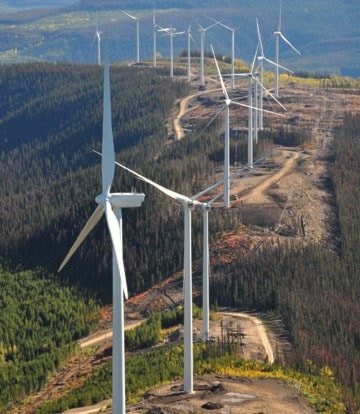Privately developed run-of-river, wind and solar power remains a possible alternative to a third dam on the Peace River, Energy Minister Bill Bennett says.
Bennett was responding to this week's decision by the federal and B.C. environment ministries to recommend construction of the Site C dam, which would flood another 83 km of the Peace River valley near Fort St. John.
Bennett said some people have incorrectly interpreted the environmental assessment certificates as a green light for the project, which BC Hydro has considered for 35 years. Studies of natural gas power generation and private clean energy projects are continuing, and a recommendation to cabinet will be made in November, Bennett said.
Studies have shown that equivalent natural gas power plants would be "marginally cheaper" than Site C, which would provide 8.5 per cent of the province's electricity supply, but that option would require amendment of the province's clean energy legislation.
"I believe there would be significant public opposition to utilizing gas to generate all of that electricity," Bennett said. "It's not totally off the table but it isn't something that I think has legs."
Outside experts have endorsed BC Hydro's forecast that its electricity demand will increase by 40 per cent in the next 20 years, with most of that met through conservation.
Bennett said that forecast may prove to be low if liquefied natural gas production, new mines and other industrial developments proceed.
The government acknowledges that seven aboriginal communities in the Peace region oppose Site C. Environment Minister Mary Polak said they do not have authority to veto the project, a position that may be tested in court if the cabinet approves Site C to proceed next year.
Bennett said the cost of wind, solar and other renewable energy is coming down, but any private alternative would have to include the additional costs of power lines and backup power for intermittent sources.



